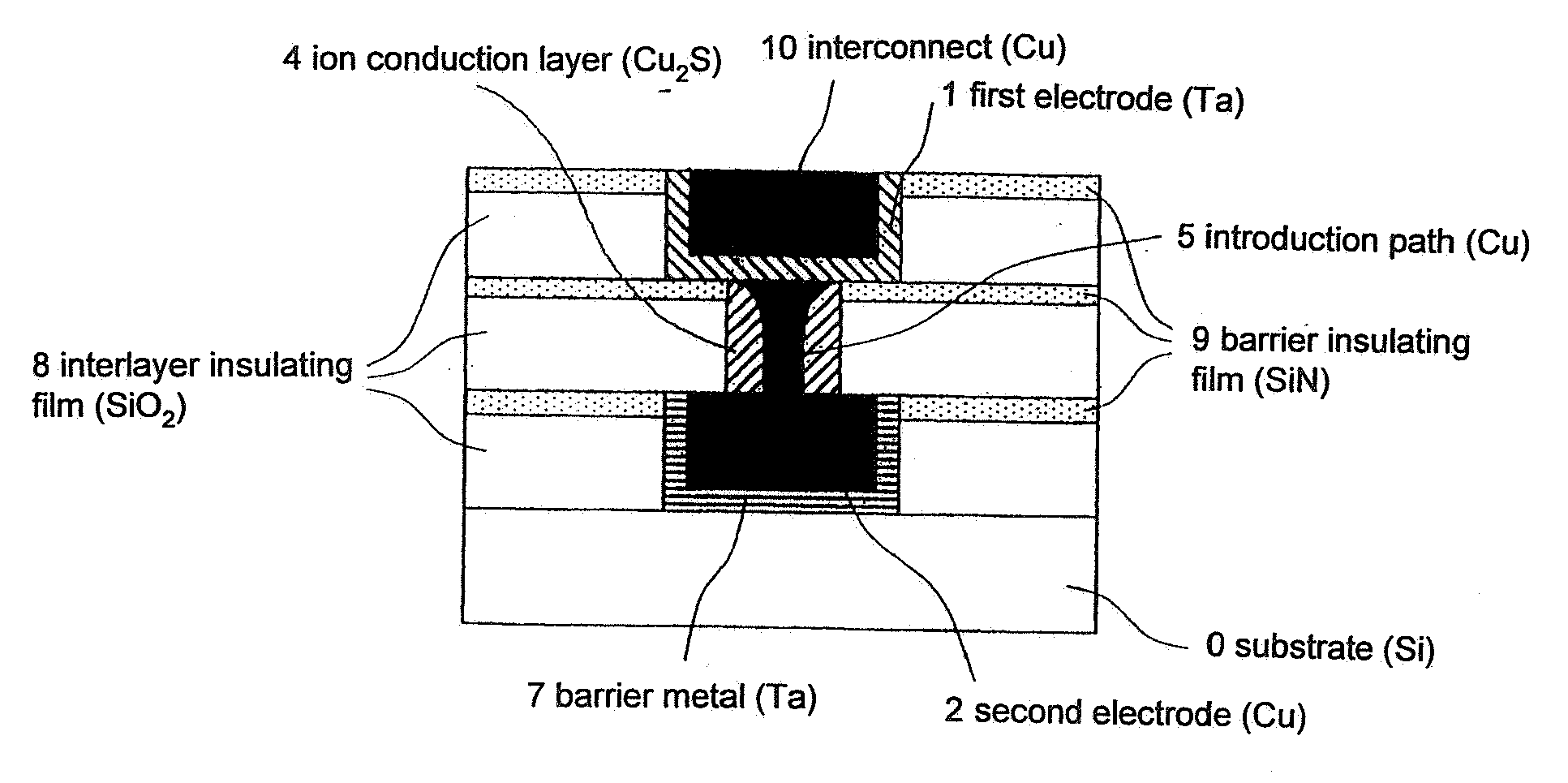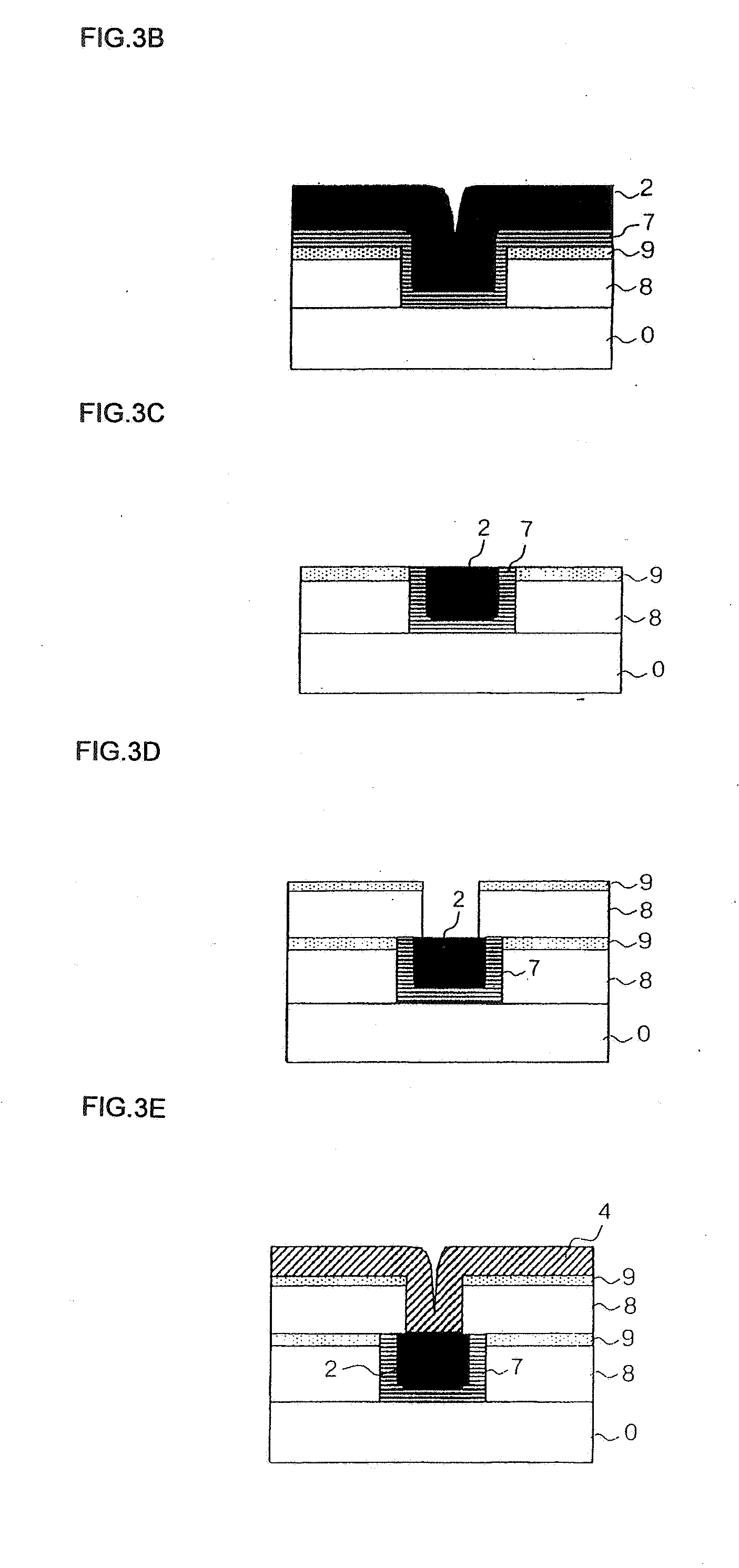Switching Element, Switching Element Drive Method and Fabrication Method, Reconfigurable Logic Integrated Circuit, and Memory Element
- Summary
- Abstract
- Description
- Claims
- Application Information
AI Technical Summary
Benefits of technology
Problems solved by technology
Method used
Image
Examples
first embodiment
[0054] The metal atom-mobile switching element of the present embodiment is a device in which, compared to a conventional two-terminal metal atom-mobile switching element, the position of an introduction path for electrically connecting a first electrode and a second electrode is determined in advance in the design stage and in which the introduction path is formed in this position using the metal that makes up the second electrode in the fabrication stage. By thus providing the introduction path in a prescribed position in advance in the design stage and fabrication stage, the route of a metal interconnect that depends on the route of the introduction path is determined in the design stage and fabrication stage. By making this prescribed position common to all switching elements on the same wafer, the routes of the metal interconnects are common for all switching elements, whereby variation in the ON resistance among switching elements on the same wafer can be reduced. In addition,...
second embodiment
[0078] In the metal atom-mobile switching element of the present embodiment, the introduction path for electrically connecting the first electrode and second electrode is formed at a prescribed position in advance by a method that differs from the first embodiment. By thus forming the introduction path at a prescribed position in advance in the design stage and fabrication stage, the route of the metal interconnect that depends on the route of the introduction path is determined in the design stage and fabrication stage, enabling a reduction of the variation in the ON resistance among switching elements on the same wafer. In addition, the introduction path formed in advance in the design stage and fabrication stage is made sufficiently thick. Because the width of the metal interconnect depends on the width of the introduction path, the resistance against electromigration can be increased.
[0079] In addition, in the metal atom-mobile switching element of the present embodiment, a thi...
third embodiment
[0102] In the metal atom-mobile switching element of the second embodiment, introduction path 5 was formed in advance at a prescribed position between first electrode 1 and second electrode 2 in the design stage and fabrication stage, whereby the route of the metal interconnect was determined in the design stage and fabrication stage and variation in the ON resistance among switching elements on the same wafer was reduced. However, as an issue distinct from variation in the ON resistance, in a three-terminal metal atom-mobile switching element such as the metal atom-mobile switching element of the second embodiment, the metal interconnect composed of a precipitate is not formed between the first electrode and second electrode, but rather, is formed between the first electrode and third electrode, raising the concern of malfunctions of the switching element.
[0103] As a result, the route of the metal interconnect must be controlled in a three-terminal metal atom-mobile switching elem...
PUM
 Login to View More
Login to View More Abstract
Description
Claims
Application Information
 Login to View More
Login to View More - R&D
- Intellectual Property
- Life Sciences
- Materials
- Tech Scout
- Unparalleled Data Quality
- Higher Quality Content
- 60% Fewer Hallucinations
Browse by: Latest US Patents, China's latest patents, Technical Efficacy Thesaurus, Application Domain, Technology Topic, Popular Technical Reports.
© 2025 PatSnap. All rights reserved.Legal|Privacy policy|Modern Slavery Act Transparency Statement|Sitemap|About US| Contact US: help@patsnap.com



